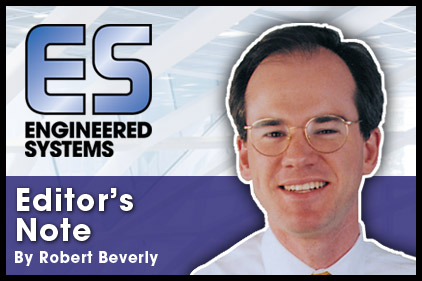Now, however, it looks like ASHRAE is hastening the end of commissioning’s Wild West days that much more quickly, as it transforms what was Guideline 0-2005 into full-fledged Standard 202P, Commissioning Process for Buildings And Systems. I’m mentioning this here because the public review process started in mid-August and by the time you read this, there will only be two or three weeks left until it ends.
Gerald Kettler is chairman of the committee working on this and he says, “The process includes specific tasks to be conducted to verify that design, construction, verification, testing, documentation, and training meet the owner’s project requirements.”
The attendant press release doesn’t hint at any specifics, but it does say this much:
The commission process assumes that owners, programmers, designers, contractors and operations and maintenance entities are fully accountable for the quality of their work. The process begins at project inception and continues for the life of a facility.
To my eyes, the first sentence is fairly essential CYA. However, the idea that proper commissioning starts at project inception has not always been a given by any stretch, as longtime readers (or anyone who has been doing commissioning for a while) will recall. It’s good to see that that much is to be considered fundamental.
Continuing “for the life of the facility” is also a notable phrase, if for no other reason that phrases like recommissioning or (as seen in our pages) retrocommissioning have developed their own informal identities in the industry. It’ll be interesting to see how Standard 202P comes to address these practices within the broader commissioning universe.
If you want to get your two cents in about that or any other part of the standard, don’t forget to do it by the October 1 deadline. Meanwhile, in this issue, Rebecca asks a question that doesn’t get heard very often, if ever: Is systems integration getting worse? The very idea runs contrary to the “onward march of progress” that we like to generally assume, but reading the column, I think you’ll find that the question is very much worth asking.
CREDIT WHERE IT’S DUE
Last month, we had the unexpected opportunity to host a guest column on building automation, and Toby Considine was kind enough to oblige us with a great BIM-related piece. However, what I meant to mention is that the original version of that column ran at www.automatedbuildings.com, the BAS industry portal run by our own editorial advisor and former BAS columnist, Ken Sinclair, and his wife, Jane. If you’re in the controls industry, then you are probably already familiar with the site, but if not, it’s definitely worth a bookmark.
Thanks to Ken for giving us his blessing to check with Toby, and thanks again to Toby for joining us. Considine owns TC9, Inc., which provides advice on technology strategy to innovative companies with a focus on smart energy, smart buildings, and the internet of things. Check that out atwww.tcnine.com. ES
ESWebinars
All webinars are free.
Registration and archives at
http://webinars.esmagazine.com
September 18
“Avoiding The Pitfalls When
Applying Chilled Beams”
Presented and sponsored by
SEMCO.



